| < Previous page | Next page > |
Create New Clustered Cache
A clustered cache can be Mirrored, Partitioned, Partitioned Replica or Replicated. This section describes how to create these caches.
From the 'File' menu select 'New' -> 'Clustered Cache'. A 'New Clustered Cache Wizard' will appear. Steps to create a new clustered cache through wizard are as follows:
Step 1 of 6
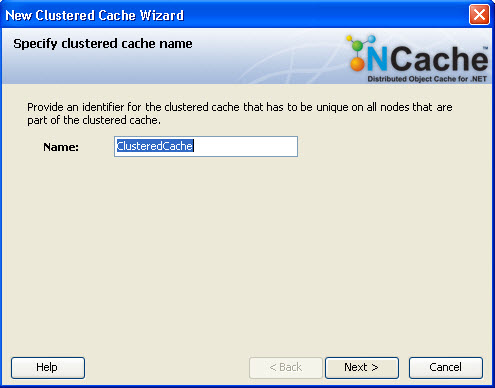
Name: Provide a unique identifier for clustered cache. For a cluster, the identifier has to be unique on all the nodes which are part of it.
Step 2 of 6
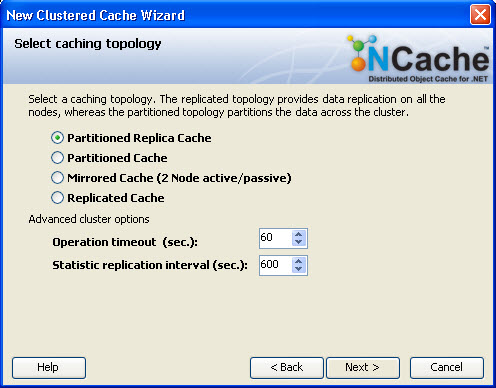
Cluster Scheme:
Mirrored cache is a cluster of two nodes (Active and passive), where all operations are performed on active node while the passive node is updated asynchronously. Passive node is promoted to active node as soon as the active node goes down. The Partitioned scheme partitions the data across the cluster, whereas the Replicated scheme provides data replication on all the nodes. Partitioned Replica scheme is same as a regular partitioned cache but it allows you to have replicas for each partition, replication can be done either synchronously or asynchronously.
Operation timeout (sec): The maximum time in seconds during which a clustered operation must be completed, otherwise the operation will fail.
Statistics replication interval (sec's.): The time interval in seconds after which a node sends its statistics to all the other nodes in the cluster.
In case of Partitioned Replica cache you can have the choice to select the replication strategy for your cache using the screen shown below. Replication Strategy screen will only be encountered in case of POR.
Replication Strategy: Replication Strategy is defines as how the data is replicated to the backup node. It can be Synchronous or Asynchronous.
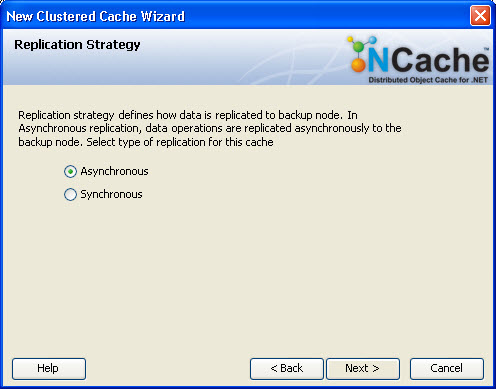
Step 3 of 6
In step 3, you will need to select nodes that will participate in cluster.
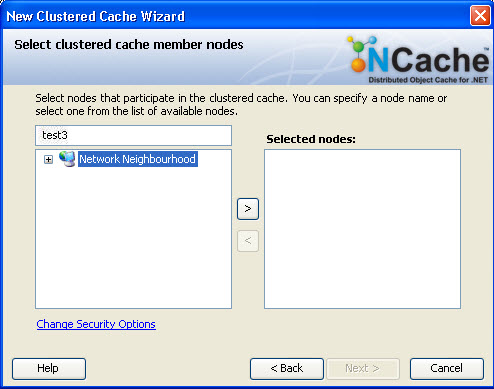
Select nodes: Select nodes that participate in the cluster. You can specify a node name or select one from the list of available nodes.
Step 4 of 6
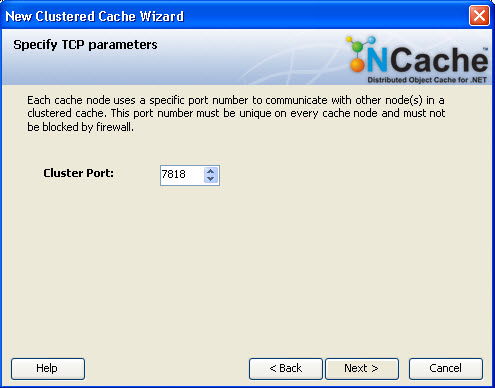
Cluster Port: TCP based communication between the cluster nodes requires a well known TCP server port for the establishment of the connection with peers. To avoid conflicts, it is preferable to have a unique port for every cluster. The default port is a proposed nonconflicting port for the cluster by NCache.
You can also change the cluster port manually. In case of port conflict, a warning message will be shown.
Step 5 of 6
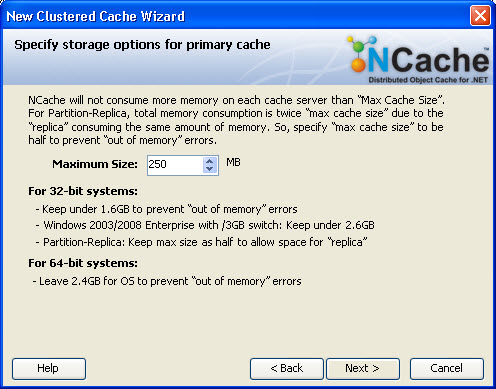
Storage Type: Specifies the storage type for the primary cache.
Maximum Size: Specifies an upper limit on the size of the cache in MB. The number of items in the cache are limited by maximum size of the cache and amount of free system memory (virtual or physical).
Step 6 of 6
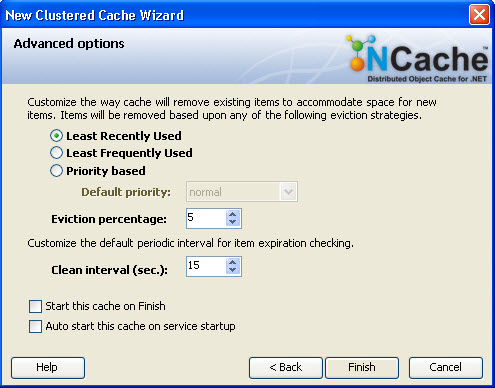
Eviction Policy: Specifies the eviction policy to determine which items to be removed from cache, if it is full to accommodate new items.
Default Priority: Specifies default priority, that is associated with an item, if no priority is specified for that item in case of priority based eviction.
Eviction Percentage: Specifies the percentage of data to be removed on each eviction.
Clean Interval (sec.): The periodic interval after which the expired items are removed from the cache.
Start this cache on finish: If this check box is checked then this new cache will start automatically as you click the finish.
Using “Start this cache on service startup” option, user will be able to mark the cache as a startup cache which will be started on cache service startup.
See Also
Add Existing Cluster | Refresh a Cluster | Start a Cluster | View Cluster Statistics | Add Server Node | Clear Contents | Remove a Cluster | Apply Configuration
|